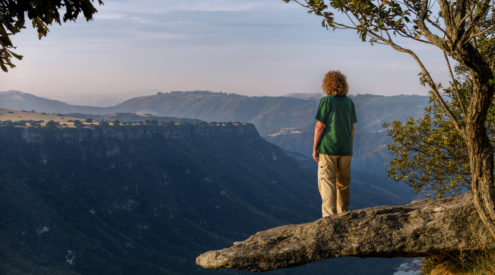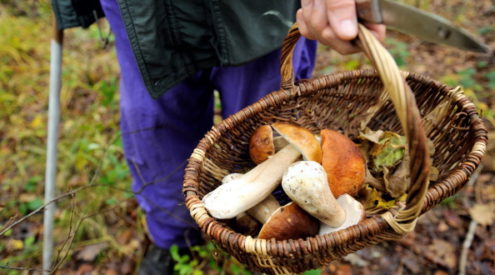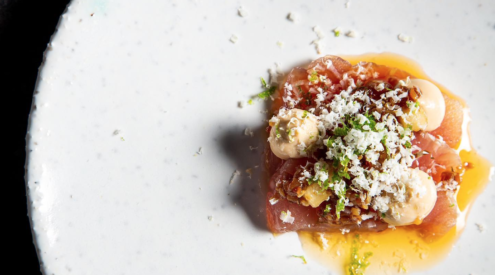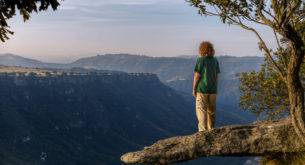We began the day with a groggy 1.5h boat ride into the iSimangaliso Wetlands estuary. iSimangaliso means “˜miracle’ or “˜wonder’ in Zulu and is home to 524 species of birds, 114 of fish, over 2000 crocodiles, 1000 hippos and five species of shark – the latter now trapped in the estuary since the river mouth closed to the sea in September 2007.
With marshland, grassland, dunes, mangrove forest and estuarine wetland , as well as the warm Indian Ocean reefs stretching up the coast, the park encompasses an incredibly diverse system of interlinking habitats. It’s this diversity, along with the unique beauty of the area, that gave iSimangaliso its World Heritage Site status back in 1999 – the first South African heritage site to be given this recognition by UNESCO.
It was a beautiful way to start a day. The cold air definitely cleared a few heads after the previous night’s festivities and by 9am we were driving south to Stanger.
Back in 2006, Stanger town was officially renamed KwaDukuza, although the signage and many of the locals we met still refer to it by the original. I say original, but in fact it’s the new name which has the longer history.
When the infamous King Shaka Zulu rose to power in the early 1800’s, he established the capital of his warrior kingdom, KwaDukuza, on the grassy hills of what is now northern KwaZulu-Natal. Before Shaka, the Zulu were a relatively minor clan living a pastoral, cattle-herding and largely peaceful existence among the larger, more powerful clans in the surrounding region. These self-governing chiefdoms spread throughout the entire area, from the now Transkei in the south, the Drakensberg in the west all the way up to the Mozambique/Swaziland borderlands to the north.
The illegitimate son of the then Zulu King, Sezangakhona, Shaka rose to power through assassination and warfare and those clans which did not ally with the Zulu or fall to his armies, fled far north and west, some dispersing as far as the Limpopo and southern Zimbabwe.
Shaka is credited with revolutionising the composition, strategy and weapons of the Zulu army. Young men, regardless of clan, were strictly separated into age-based regiments called the “˜amabutho.’ Joining at puberty, the warriors would remain bound to their amabutho for life, with loyalty to their regiment taking precedence over family or any other allegiance.
In battle, Shaka would throw his older regiments into the fray first, tying up his enemies with a frontal assault from his hardened veterans. The younger amabutho would then move into flanking positions on either side, a manoeuvre the Zulu termed “˜the horns of the bull,’ enveloping the enemy and attacking simultaneously from front and sides. Though there are some earlier records of this famous “˜pincer movement’ being deployed throughout history, Shaka is thought to be the first military tactician to employ it as standard practice and with such devastating success.
Shaka’s fame as a military leader is further strengthen by his invention of a weapon unique among his contemporaries – the “˜Iklwa.’ This highly effective blade was adapted from the longer “˜Assegai’ or throwing spear traditionally used by local clans for generations. Shaka shortened the handle and widened the metal tip to form a close-combat stabbing lance which rather gruesomely derives its name, iklwa, from the sound it made when it was withdrawn from an enemy’s body.
Shaka ruled for just 10 years from 1818 to 1828. Sitting alone on a rock one morning in his KwaDukuza kraal, he was assassinated – stabbed to death by his three brothers who snuck up on him from behind. The date was marked as 24 September 1828 and since then, though for many years unrecognised as a national public holiday, the day has been remembered by the Zulu people as Shaka Day.
In 1995, the government of the new South Africa declared Shaka Day a national holiday, but chose to open the significance to all South Africans, officially instating National Heritage Day as a day when all South Africans could remember their diverse roots.
The Braai4Heritage mission is to take this one step further. It’s day 27 of the tour today and I can confirm that there isn’t anywhere that we’ve been to in the country so far that doesn’t know what a braai is and doesn’t consider it a key part of their South African heritage. 24 September seems a fitting day for all South Africans to gather around a braai and braai for heritage – whatever you may reckon that heritage to be.
Heading back from KwaDukuza to the coast, we stopped in at the Albert Luthuli museum in Groutville, where the great figure of our more recent history lived (for many years under house-arrest) in the late 1950’s and early 1960’s. Chief Luthuli was the first South African to received the Nobel Peace Prize in 1960 though he had a wait a year to get permission from the then government to leave the country and receive his prize in Sweden. On 21 July 1967 he was struck by a train – in very suspicious circumstances – while walking alone on the boundary of his farm, inspecting his fields. No autopsy was ever performed.
By the time we reached the coast it was pouring with rain and our planned braai at Shaka’s Rock was a looking a decidedly bleak prospect. After a few minutes scouting the terrain, we settled on a sheltered tidal pool and, somehow managing to pass ourselves off as building contractors to the security guards as, we set up the braai in the lee of the main changing room and got to “˜work.’
The crayfish was without doubt the best I’ve ever eaten. As I may have mentioned, I haven’t eaten that many, but the consensus was unanimous and we washed them down happily with a glass of fine white wine and a touch of tasty salad. All in all a great day, topped by a delicious braai and finished in style with a warm arrival in a much sunnier Durban.
For boat trips into the iSiMangaliso Wetlands estuary, give Advantage Tours a call.
Tel: +27(0)355901259
Cel: +27(0)834872762
Web: www.advantagetours.co.za
Email: [email protected]
















